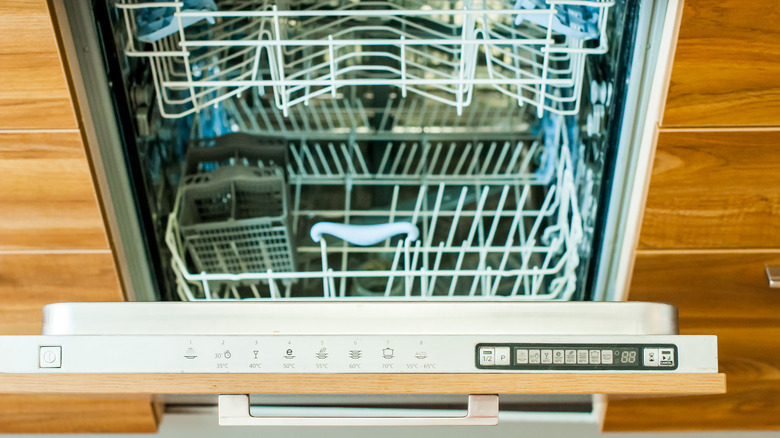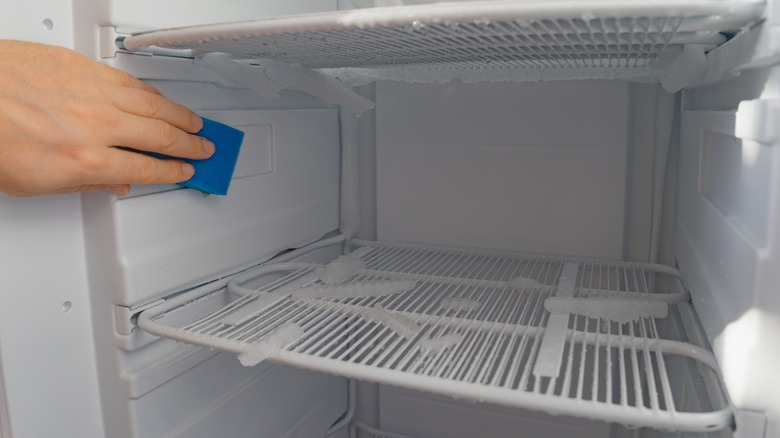Pop Your Refrigerator Shelves In The Dishwasher For An Odor-Busting Clean
Expired food and lingering smells often signal that your fridge needs a deep clean. Cleaning out the fridge can be a headache, especially when it comes to eliminating stubborn odors. Fortunately, there are several tips for achieving a cleaner refrigerator that can simplify the process. These include using drawer liners, organizing food into bins, and labeling food containers with dates. To save time when cleaning the shelves, consider placing them in the dishwasher to remove pungent smells — no scrubbing required.
Of course, unpleasant odors are not the only reason to regularly clean your fridge. A dirty refrigerator may not operate as efficiently, particularly if the coils are clogged with dust or other debris. According to the Australian Institute of Food Safety, unclean refrigerators can become a hotspot for the growth of dangerous bacteria like E. coli and salmonella. For these reasons, it's crucial to clean up any spills and dispose of moldy or expired food promptly. For a thorough cleaning, aim to wash your refrigerator every three to four months, and make it easier by putting the drawers and shelves in the dishwasher.
Make sure your shelves are dishwasher safe
Before placing your dirty refrigerator bins and shelves into the dishwasher, take the time to ensure they are dishwasher-safe. Consult your refrigerator's manual if you have it, or look for the owner's manual online if you don't. It's better to be safe than sorry — you don't want to ruin your dishwasher, or have to completely replace your refrigerator's interior.
Generally speaking, plastic and glass drawers and shelves can safely go through a normal dishwasher cycle. However, refrigerators with integrated LED lighting should not be washed this way; they need to be hand-cleaned carefully. The same applies to plastic components with low melting points.
To prevent plastic drawers from warping or glass shelves from cracking, let them come up to room temperature before placing them in the dishwasher. Another pro tip: Don't forget to wipe down the exterior of your fridge, including doors and handles, which are often major germ hubs.
Your freezer requires a more hands-on approach
Cleaning out the freezer may seem daunting, but the good news is that you typically only need to do it once a year. What's more, you can usually clean your freezer without having to defrost it first, especially if you own a newer model that is either self-defrosting or frost-free. (As with refrigerators, it's always a good idea to consult your owner's manual for cleaning guidelines first.)
Putting your freezer racks in the dishwasher might not be the best approach, mainly because you would have to wait for them to thaw to room temperature. However, to make them shine like new, all you need is some vinegar, hot water, and a sponge or microfiber cloth; rubber gloves are optional but recommended. Before you start scrubbing, remove all food and unplug the freezer to make sure the cord doesn't get wet. Then, mix the water and vinegar in a spray bottle or bowl, and use the sponge or cloth to wipe down the interior. Once you're finished, dry the interior thoroughly with a clean cloth or paper towel, and your freezer will be ready for use again.



